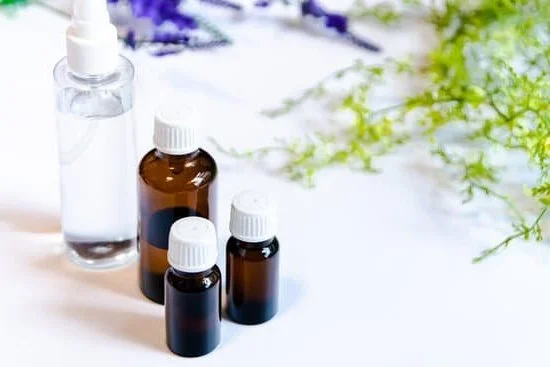Are you looking for the perfect carrier oils for aromatherapy and massage? Look no further. In this article, we will dive into the world of carrier oils and their significance in aromatherapy and massage. Whether you’re a seasoned aromatherapist or just starting your journey into the world of essential oils, understanding carrier oils is crucial for effective and safe use.
Carrier oils are an essential part of any aromatherapy and massage practice, acting as a base to dilute potent essential oils, making them safe for topical application. In this comprehensive guide, we will explore the different types of carrier oils used in aromatherapy and massage, their benefits, and how to choose the right one for different essential oils.
Not only will we discuss the importance of carrier oils in aromatherapy and massage, but we will also provide tips on blending carrier oils for different massage techniques. Whether you’re looking to enhance relaxation or relieve muscle tension, knowing how to blend carrier oils effectively is crucial for achieving optimal results. So, let’s dive in and discover everything you need to know about carrier oils for aromatherapy and massage.
Understanding Carrier Oils
Carrier oils play a crucial role in the practice of aromatherapy and massage. These oils, also known as base oils, are used to dilute essential oils before they are applied to the skin, making them safe for therapeutic use. Understanding what carrier oils are and their importance in aromatherapy and massage is essential for anyone interested in practicing these healing arts.
What are carrier oils? Carrier oils are natural, plant-based oils that are derived from the fatty portion of a plant, such as the seeds, nuts, or kernels. They are distinct from essential oils, which are highly concentrated liquids extracted from aromatic plants. Carrier oils have unique properties that make them ideal for blending with essential oils and carrying their therapeutic benefits into the skin.
The importance of carrier oils in aromatherapy and massage cannot be overstated. They serve as a vehicle for diluting essential oils, which can be too potent to apply directly to the skin. This dilution process not only makes the essential oil safer for topical use but also allows for better absorption into the skin. Carrier oils also provide hydration and nourishment to the skin, making them an integral part of any aromatherapy or massage practice.
It is important to note that different types of carrier oils have varying qualities and benefits, so it’s crucial to choose the right one for a particular purpose or individual need. Some popular carrier oils used in aromatherapy and massage include sweet almond oil, jojoba oil, coconut oil, grapeseed oil, and olive oil. Each of these carrier oils has its own unique properties that make it suitable for specific uses in aromatherapy and massage.
- Sweet almond oil: This light and non-greasy oil is excellent for various massage techniques and is easily absorbed by the skin.
- Jojoba oil: Known for its similarity to human sebum, jojoba oil is great for balancing oily or acne-prone skin.
- Coconut oil: With its antimicrobial properties and pleasant aroma, coconut oil is ideal for relaxation massages.
- Grapeseed oil: This lightweight oil is rich in antioxidants and suitable for all skin types.
- Olive oil: A staple in many households, olive oil is deeply moisturizing and perfect for nourishing dry or damaged skin.
Different Types of Carrier Oils Used in Aromatherapy and Massage
Carrier oils play a crucial role in aromatherapy and massage, as they serve as the base for diluting essential oils and are used to carry the essential oils onto the skin during massage. There are several different types of carrier oils that are commonly used in aromatherapy and massage, each with its own unique properties and benefits.
Popular Carrier Oils
Some of the most popular carrier oils used in aromatherapy and massage include sweet almond oil, jojoba oil, coconut oil, grapeseed oil, and apricot kernel oil. Each of these carrier oils has its own distinct aroma, texture, and therapeutic properties that make them suitable for different types of massages and aromatherapy treatments.
Specialty Carrier Oils
In addition to the commonly used carrier oils, there are also specialty carrier oils such as rosehip seed oil, evening primrose oil, and argan oil that offer specific benefits for the skin. These specialty carrier oils are often used in more targeted aromatherapy treatments or massage techniques aimed at addressing specific skin concerns or health issues.
Choosing the Right Carrier Oil
When choosing a carrier oil for aromatherapy or massage, it’s important to consider factors such as skin type, aroma preference, intended use, and therapeutic benefits. Some carrier oils may be more suitable for certain skin types or specific essential oils, while others may offer additional nourishing or moisturizing properties.
Understanding the different types of carrier oils used in aromatherapy and massage is essential for creating customized blends that cater to individual client needs. Whether you’re looking to enhance relaxation, promote skin health, or address specific wellness goals through aromatherapy and massage, selecting the right carrier oil is a key factor in achieving successful outcomes.
Benefits of Using Carrier Oils in Aromatherapy and Massage
Using carrier oils in aromatherapy and massage has numerous benefits that enhance the overall experience and effectiveness of these practices. One of the main advantages of using carrier oils is their ability to dilute essential oils, making them safe to apply on the skin during massages or as part of aromatherapy treatments. This allows for a more gentle application and reduces the risk of skin irritation or allergic reactions.
In addition to dilution, carrier oils also have their own therapeutic properties that can complement the effects of essential oils. For example, coconut oil is known for its moisturizing and anti-inflammatory properties, making it an ideal carrier oil for massage therapy. Similarly, almond oil is rich in vitamin E and has a light texture that makes it suitable for aromatherapy blends.
Furthermore, carrier oils serve as a medium for better absorption of essential oils into the skin, allowing for a more effective delivery of their therapeutic benefits. This enhances the overall experience of both aromatherapy and massage by promoting relaxation, reducing stress, and alleviating muscle tension. The use of carrier oils also helps extend the shelf life of essential oils by slowing down evaporation.
| Benefit | Description |
|---|---|
| Dilution of Essential Oils | Carrier oils make it safe to apply essential oils on the skin during massages or aromatherapy treatments. |
| Therapeutic Properties | Carrier oils have their own therapeutic properties that complement those of essential oils. |
| Better Absorption | They help in better absorption of essential oils into the skin for more effective delivery of therapeutic benefits. |
How to Use Carrier Oils in Aromatherapy and Massage
Topical Application
One of the most common ways to use carrier oils in aromatherapy and massage is through topical application. This involves diluting essential oils with carrier oils before applying them to the skin. Carrier oils help to “carry” the essential oils onto the skin, allowing for a safe and effective application. When using carrier oils for massage, they also provide lubrication, allowing the hands to glide smoothly over the skin.
Dilution Ratios
It is important to understand the proper dilution ratios when using carrier oils in aromatherapy and massage. The dilution ratio will depend on various factors such as the type of essential oil being used, the intended use (e.g.
massage or topical application), and the individual’s sensitivity to essential oils. A general rule of thumb is to use between 1-5% essential oil dilution for adults, which equates to about 6-30 drops of essential oil per ounce of carrier oil.
Making Aromatherapy Blends
Carrier oils play a crucial role in making custom aromatherapy blends. By mixing different carrier oils with specific essential oils, you can create personalized blends for various therapeutic purposes. Some carrier oils are better suited for certain skin types or conditions, while others offer unique therapeutic properties. Understanding the characteristics of different carrier oils will allow you to craft blends that suit your needs or the needs of your clients during massage therapy sessions.
Choosing the Right Carrier Oil for Different Essential Oils in Aromatherapy
When it comes to aromatherapy, choosing the right carrier oil for different essential oils is crucial to ensure the best results. Each essential oil has unique properties and benefits, and the carrier oil plays a significant role in enhancing and delivering these benefits during aromatherapy and massage sessions. Here are some popular carrier oils and their recommended pairings with specific essential oils:
- Lavender Essential Oil: This versatile oil pairs well with light, non-greasy carrier oils such as Sweet Almond Oil or Jojoba Oil. These carrier oils allow the calming and soothing properties of lavender to be effectively absorbed by the skin during massage.
- Peppermint Essential Oil: Known for its invigorating scent, peppermint oil blends well with Coconut Oil or Grapeseed Oil. The cooling effect of peppermint is complemented by these lightweight carrier oils, making them ideal for massage therapies.
- Tea Tree Essential Oil: With its antiseptic and anti-inflammatory properties, tea tree oil is often paired with Olive Oil or Sunflower Seed Oil for their nourishing and moisturizing effects on the skin.
Additionally, it’s important to consider the specific needs of the individual receiving the aromatherapy or massage treatment. Some carrier oils may be more suitable for individuals with sensitive skin, while others may have a longer shelf life for extended use.
Understanding the compatibility of essential oils with carrier oils is an essential aspect of achieving desired therapeutic outcomes in aromatherapy and massage practices. By carefully selecting the right carrier oil for each essential oil, practitioners can maximize the benefits of both the essential oil and the carrier oil, resulting in a more effective and enjoyable experience for clients.
Tips for Blending Carrier Oils for Different Massage Techniques
Blending carrier oils for different massage techniques is an essential skill for anyone practicing aromatherapy and massage therapy. Whether you are a professional or just starting to learn about this holistic practice, understanding how to blend carrier oils effectively can greatly enhance the benefits of your massage treatments.
When it comes to blending carrier oils for massage, it’s important to consider the specific needs and preferences of the client. Some carrier oils have different properties that can contribute to the overall experience of the massage.
For example, sweet almond oil is known for its nourishing and skin-soothing properties, making it a popular choice for relaxation massages. On the other hand, grapeseed oil is lightweight and has a non-greasy texture, making it suitable for deep tissue massages.
Another important aspect to consider when blending carrier oils is the fragrance. While some carrier oils are virtually odorless, others have a distinct aroma that can complement or interfere with essential oils used in aromatherapy. This is why it’s crucial to understand how different carrier oils interact with essential oils and how they affect the overall aroma of the massage blend.
In addition to considering the properties and fragrance of carrier oils, it’s also important to understand their shelf life and stability. Some carrier oils have a longer shelf life than others, while some are more prone to oxidation. By understanding these factors, you can make informed decisions on which carrier oils to blend together based on their compatibility and longevity.
| Carrier Oil | Main Properties | Fragrance | Shelf Life |
|---|---|---|---|
| Sweet Almond Oil | Nourishing, skin-soothing | Mild nutty scent | Average shelf life of 1 year |
| Grapeseed Oil | Lightweight, non-greasy | Very mild nutty scent | 6 months to 1 year shelf life |
Carrier Oils for Aromatherapy and Massage Book
In conclusion, the use of carrier oils in aromatherapy and massage is essential for maximizing the benefits of these practices. Understanding the different types of carrier oils and their unique properties is crucial in choosing the right one for various essential oils and massage techniques. The benefits of using carrier oils include enhancing the therapeutic effects of essential oils, providing lubrication during massages, and nourishing the skin.
For those interested in delving deeper into the world of carrier oils for aromatherapy and massage, a valuable resource is the “Carrier Oils for Aromatherapy and Massage Book.” This comprehensive guide offers detailed information on a wide range of carrier oils, their uses, benefits, and tips for blending them effectively. It also provides insights into choosing the right carrier oil for different essential oils and offers recommendations based on specific needs and preferences.
Whether you are an experienced practitioner or just starting with aromatherapy and massage, investing in a good carrier oils book can greatly enhance your practice. With the right knowledge and resources at hand, you can make informed decisions about which carrier oils to use, how to blend them effectively, and ultimately improve the overall experience for yourself or your clients.
As you continue to explore the world of aromatherapy and massage, remember that carrier oils play a vital role in enhancing the therapeutic benefits and overall satisfaction derived from these practices.
Frequently Asked Questions
What Is the Best Carrier Oil to Mix With Essential Oils for Massage?
The best carrier oil to mix with essential oils for massage is often fractionated coconut oil. It is odorless, absorbs quickly into the skin, and has a long shelf life, making it popular among massage therapists and aromatherapy enthusiasts.
Which Oil Is Commonly Used as Carrier Oil in Aromatherapy?
One of the most commonly used carrier oils in aromatherapy is jojoba oil. It closely resembles the natural oils of our skin, making it easily absorbable and nourishing for the skin. Its mild scent also makes it suitable for blending with essential oils.
Which Oil Is Best for Aromatherapy Massage?
When it comes to aromatherapy massage, sweet almond oil is often considered the best option. It is rich in vitamin E and has a silky texture that glides smoothly over the skin. Additionally, its mild aroma blends well with most essential oils used in aromatherapy treatments.

Are you looking for a natural way to improve your health and wellbeing?
If so, aromatherapy may be the answer for you.





